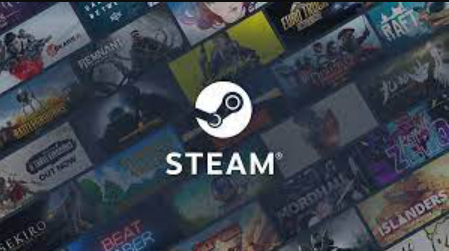Steam Antitrust Lawsuit: Gaming Giant Under Fire!

The Steam antitrust lawsuit alleges that Valve Corporation abused market dominance. Plaintiffs claim Steam’s policies stifle competition and inflate prices.
Valve Corporation, the parent company of the Steam platform, is facing a lawsuit challenging its stronghold on PC game distribution. The legal action accuses Steam of enforcing restrictive terms with developers, limiting where they can sell their games, and harming competitors and consumers.
The core of the dispute revolves around claims that Steam’s dominance leads to higher prices for games and a lack of innovation and choice in the market. This lawsuit has sparked a debate about the balance between platform control and an open market in the digital age. For gamers and developers alike, the outcome could significantly impact the future landscape of PC gaming distribution and its pricing structures.
Contents
Steam’s Dominance In Digital Game Distribution
Steam’s influence on the world of digital gaming is undisputed. As the go-to platform for gamers worldwide, it has reshaped how we purchase, play, and interact with video games. With a vast library of games and an easy-to-use interface, it’s no wonder that Steam is the king of digital game distribution.
Steam is commanding in the market, with most game developers considering it the primary storefront for PC titles. Through constant innovation and user-focused features, Steam has attained and maintained a majority share in the digital distribution landscape.
Users flock to Steam for various reasons:
- Exclusive game releases
- User-friendly platform
- Regular sales and discounts
A peek at Steam’s user statistics further cements its dominance:
| Statistical Factor | Value |
| Monthly Active Users | 120 million |
| Number of Games | Over 50,000 |
| Peak Concurrent Users | Over 20 million |
These numbers highlight Steam’s ability to attract and retain a massive player base, solidifying its place at the pinnacle of digital distribution platforms.
Competitors And Rivals
Despite Steam’s massive presence, a handful of competitors are working to break its hold on the market:
Key rivals include:
- Epic Games Store, with exclusives and free games
- GOG offers DRM-free games
- Microsoft Store, integrated into Windows
Competition spurs innovation, which ultimately benefits consumers. Steam must continue evolving to maintain its position as rivals introduce new features. This landscape forms the backdrop for the discussion on antitrust matters.
The antitrust lawsuit challenges Steam’s reign, prompting questions about fairness and the consumer benefits of competition.
Understanding Steam’s market dynamics is critical as we investigate the implications of this legal challenge for gamers and developers alike.
Origins Of The Antitrust Accusations
Steam, a digital distribution giant in gaming, is facing a legal battle. The company is accused of monopolistic practices, and critics argue that Steam stifles competition. The implications for the gaming industry are substantial. Understanding the accusations requires delving into the legal grounds and the claims of those who initiated the lawsuit.
Legal Basis For The Lawsuit
The antitrust lawsuit hinges on the alleged abuse of market dominance. Key points of contention include:
- Exclusivity Agreements: Developers often must sell only through Steam.
- Price Parity Clauses: These clauses prevent cheaper prices elsewhere.
- Large Market Share: Critics claim this share allows anticompetitive practices.
Plaintiffs argue that these elements violate the Sherman Antitrust Act, which prevents business activities considered harmful to consumers and competition. The lawsuit claims that Steam’s behaviour goes against this policy.
Plaintiffs And Their Claims
A group of game buyers and developers leads the charge. They present several allegations against Steam:
| Plaintiff Type | Claims |
| Game Buyers | Prices are inflated due to Steam’s market control. |
| Developers | Limited distribution options restrict earning potential. |
These claims suggest that Steam’s conduct suppresses innovation and inflates prices. The plaintiffs seek change in the distribution landscape for PC games, hoping for a market that fosters better consumer deals and fairer terms for developers.
Key Issues At The Heart Of The Case
The Steam Antitrust Lawsuit has turned heads in the gaming industry. Core issues challenge how digital marketplaces operate today. This section dives deep into the meat of the case: alleged pricing schemes and contentious marketplace practices.
Alleged Price Fixing
Steam stands accused of manipulating game prices. Critics argue that consumers face unfair costs. This concern highlights the tension between developer agreements and public benefits. Fingers point to so-called “Most Favored Nation” clauses, locking prices across platforms. The accusation is unadorned: price competition suffers, and gamers pay more.
Marketplace Practices In Question
- Limited market access: Critics claim Steam gates the market for others.
- Revenue sharing: The debate questions Steam’s cut from sales.
- Exclusive deals: Are these practices stifling competition?
Youthful developers dream of a fair playground. Seasoned players seek value for money. Both demand transparency. The lawsuit seeks answers. It challenges the status quo, sparking a potentially industry-shaking debate.
Steam’s Revenue Sharing Model
Steam’s Revenue Sharing Model lies at the heart of its platform. It’s how money gets split between game developers and Steam itself. This model has been a critical feature of Steam’s success, allowing developers to sell their games. Yet, it also attracts criticism and comparisons with other platforms. Understanding Steam’s model is crucial for grasping the implications of the antitrust lawsuit.
Criticism From Developers
Many developers voice concerns about Steam’s revenue-sharing terms. Typically, Steam takes about 30% of game sales. This is a lot for small game creators. They need more money to grow and make new games. Let’s look closer at these criticisms:
- High Costs: The 30% cut is a significant expense, reducing profits.
- Impact on Budgets: Smaller budgets may affect game quality.
- Limited Exposure: Some say Steam’s algorithm favours big names over indies.
Comparison With Other Platforms
Steam is not the only player in the game. There are other platforms for selling digital games. Each has its revenue model. Here’s a simple comparison:
| Platform | Revenue Share | Notable Features |
| Steam | 30% | Largest user base |
| Epic Games Store | 12% | Better terms for developers |
| Itch.io | Choose your own | Support for indies |
This comparison shows Steam’s more significant cut compared to others. Platforms like Epic Games Store offer better deals, and Itch.io even lets creators pick their share. These varying models show the dynamic nature of the gaming industry’s business side.
Possible Impacts On Gamers And Developers
Gamers and developers everywhere pay close attention when a giant like Steam faces an antitrust lawsuit. The outcome could shake the foundation of digital distribution in the gaming industry. What might this mean for you? Let’s delve into this lawsuit’s possible impacts on consumers and creators.
Consumer Pricing Concerns
A central topic in the Steam antitrust discussion revolves around game prices. Gamers worry these legal entanglements might lead to higher prices. If Steam changes how it does business, affordable games could become a treasure of the past. Economic shifts due to the lawsuit might mean paying more for the next indie hit or AAA title.
- Impact on Discounts: Steam’s famous sales could wane.
- Price Inflation: Less competition typically leads to costlier games.
- Bundling Changes: Game bundles could see less favourable pricing.
Developer Access To The Market
Indie and established developers alike could face a new landscape. This lawsuit might crack Steam’s door open wider or seal it shut. Access to Steam’s user base is a golden ticket for game sales. Changes in policy or fees discourage developer presence on the platform, leading to fewer game choices for everyone.
| Current Scenario | Potential Changes |
| Ease of access for developers | Hindered market entry |
| Large consumer base on Steam | Shift to alternative platforms |
| Set revenue-sharing terms | New financial models |
Steam’s Defense Strategy
In the face of the antitrust lawsuit, Steam’s Defence Strategy stands on a foundation shaped by robust legal expertise and widespread support from customers and game developers. With allegations challenging Steam’s market dominance, the platform’s defence utilizes a multipronged approach that addresses the legal and community aspects of the case.
Legal Precedents And Counterarguments
Steam’s legal team is armed with a deep understanding of previous antitrust rulings. They prioritize strong counterarguments to weaken the prosecution’s points. The defence strategy involves:
- Highlighting the competitive nature of the digital distribution market
- Emphasizing consumer choice as an indication of a healthy ecosystem
- Pointing out the absence of exclusive dealings, which are typical in antitrust cases
Such counterarguments are designed to establish Steam’s practices as industry standards that benefit, rather than harm, the overall market.
Public And Industry Support
Public sentiment and the backing of industry professionals play a crucial role in bolstering Steam’s defence. Steam draws support by:
- Presenting testimonials from satisfied users who appreciate the platform’s service and variety
- Garnering endorsements from independent developers, who testify to Steam’s role in their success
- Illustrating partnerships with industry giants that rely on Steam’s infrastructure
This combination of legal understanding and a strong supporting cast helps Steam present a fortified stance against antitrust allegations.
Potential Outcomes Of The Lawsuit
The Steam Antitrust Lawsuit looms large over the gaming industry. Many eyes watch closely as Valve defends its digital storefront, Steam, against claims of monopolistic practices. Various outcomes could ripple across the sector, potentially reshaping how games are sold and distributed digitally. The repercussions of this legal battle might redefine the competitive landscape in the short and long term, alongside sculpting new precedents for digital market regulation.
Short-term vs. long-term Industry Effects
A decision against Steam could immediately disrupt the industry. Developers and publishers may enjoy more leverage on sales terms, and players could benefit from increased competition and lower prices.
The lawsuit’s outcome might drive more profound changes in the long term. Industry power dynamics could shift, favouring new entrants or bolstering current smaller platforms. This could birth a wave of innovation and diversification in the digital distribution space. The following table highlights critical considerations:
| Time Frame | Effects on Industry |
| Short-term |
|
| Long-term |
|
Implications For Digital Market Regulation
A ruling here could set critical legal precedents. Regulators might strengthen their oversight of digital storefronts. This translates to more choices and better market access for consumers and developers. However, heightened regulation could also mean stricter compliance standards for platforms. Here’s a quick rundown of potential regulatory shifts:
- Increased monitoring of digital storefront practices
- More precise requirements for platform conduct and competition
- Enforcement of fair pricing and anticompetitive behavior regulations
All stakeholders should oversee the Steam lawsuit. The results may sculpt the digital terrain for years to come.
Looking Beyond The Lawsuit
Steam’s antitrust lawsuit has sent ripples through the gaming industry, underscoring a debate about market control and fair competition. The outcome could reshape how we buy and play games online. Eyes are now on the horizon, where the digital landscape might be dramatically different.
The Future Of Digital Game Distribution
Change is inevitable in the fast-paced world of digital game sales. What will this mean for gamers and developers alike? Let’s unwrap the potential scenarios.
- More competition: A ruling against Steam could invite new storefronts.
- Lower prices: Gamers might enjoy better deals as platforms vie for their wallets.
- Broader access: We could see games released across more platforms simultaneously.
- Innovative features: Competition drives innovation, creating new, exciting user experiences.
The ecosystem is ripe for transformation, and legal decisions will guide this change. Developers may gain leverage to negotiate better terms, which can lead to a renaissance of in-game creativity and diversity.
Antitrust In The Tech Industry
The tech world often feels the tremors of antitrust actions. With every lawsuit, the industry landscape shifts.
| Impact | Beneficiary |
| Market Diversification | Consumers and Innovators |
| Policy Reformation | Regulators and Lawmakers |
| Strategic Partnerships | Small and Medium Enterprises |
This battle against monopolistic practices is not unique to Valve and Steam. Giants such as Google and Apple also face similar challenges. The shift towards openness and fairness can catalyze a new era where smaller players have a fighting chance against the titans.
Conclusion
The legal battle involving Steam highlights the complexities of digital marketplaces. As consumers demand fairness, Valve’s practices remain under scrutiny. With the outcome looming, the gaming industry awaits the impact. Legal precedents might reshape how we buy and sell games online.



